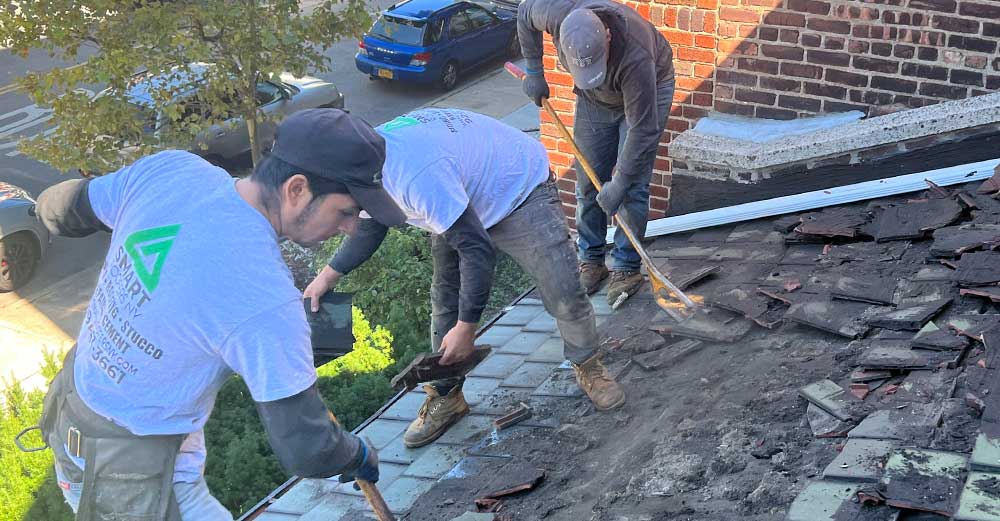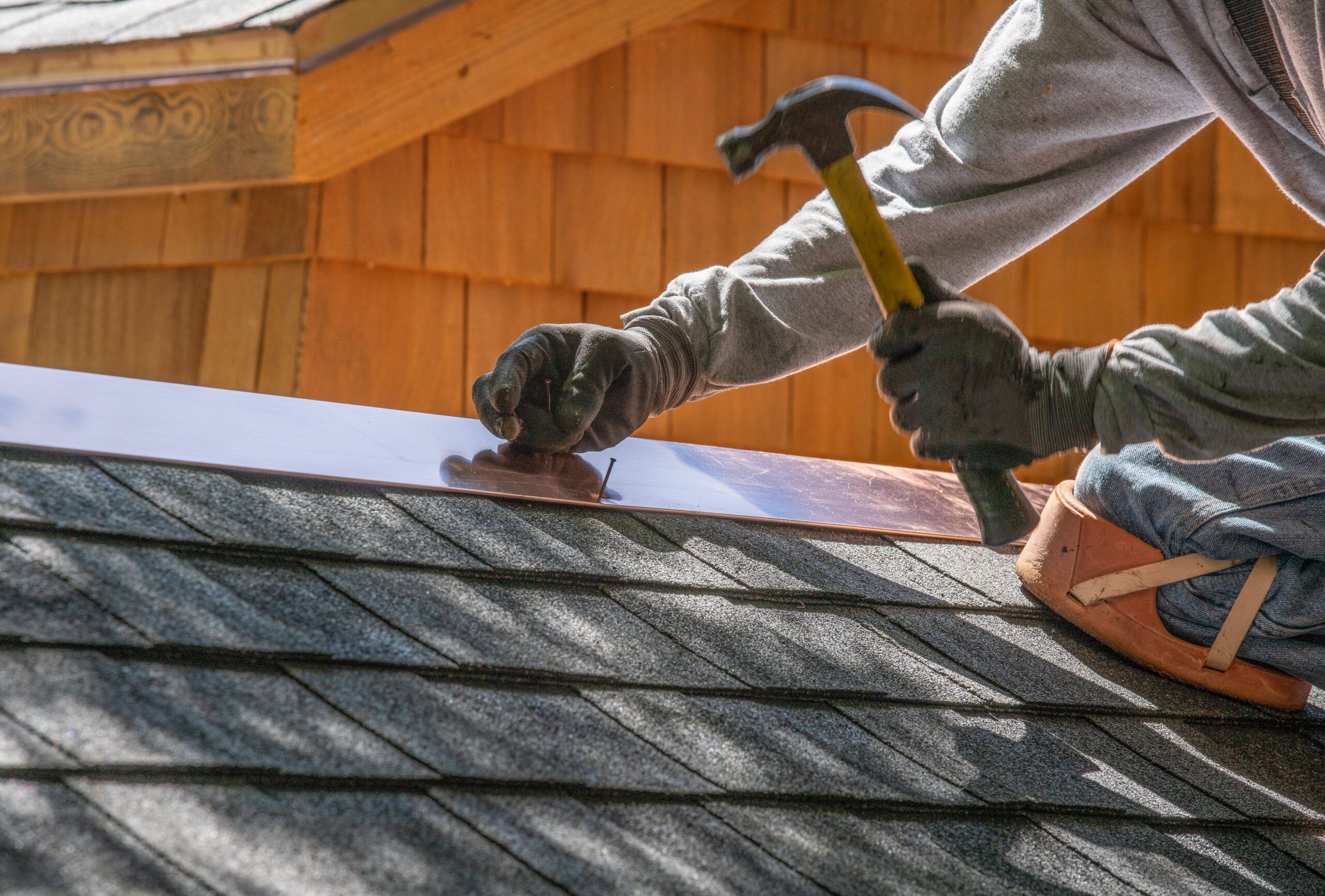Roof Repair Oahu: Professional Roof Repairs for Lasting Defense
Recognizing the Different Kinds Of Roof Coverings: A Comprehensive Overview for Homeowners
In the realm of homeownership, choosing the appropriate roof covering style is a choice that lugs significant effects for both capability and visual charm. With a range of choices-- varying from the traditional gable to the contemporary flat-- each type provides one-of-a-kind benefits and challenges that should align with the property owner's ecological considerations and specific demands. Understanding these distinctions not only aids in making an enlightened choice yet additionally influences long-lasting maintenance and power performance. As we explore the ins and outs of numerous roofing system types, it ends up being noticeable that one size does not fit all; the appropriate option may amaze you.
Gable Roofs
Saddleback roofs, identified by their triangular shape, are among one of the most prominent roof styles due to their simplicity and performance in dropping water and snow. This layout includes 2 sloping sides that fulfill at a ridge, permitting efficient water drainage and reducing the danger of water accumulation. The steep pitch commonly associated with gable roofings enhances their capability to deal with hefty rainfall, making them ideal for different environments.
Along with their practical advantages, saddleback roofs supply aesthetic versatility. They can be adapted to various building styles, from typical to contemporary homes. The style can additionally fit extra features such as dormer home windows, which enhance all-natural light and ventilation in the attic room area.
In addition, gable roof coverings supply ample space for insulation, adding to energy performance. Homeowners can pick from a variety of roofing products, including asphalt shingles, metal, and ceramic tiles, additionally improving customization alternatives.
Despite their advantages, saddleback roofs may call for additional support in areas prone to high winds or hefty snowfall. Overall, the saddleback roof stays a favored selection due to its mix of functionality, durability, and visual charm.
Apartment Roofs
Level roof coverings are commonly identified for their minimalist design and practical applications, particularly in business and commercial settings (oahu roofing). These roofs include a virtually straight or straight surface, which permits very easy building and flexible area utilization. While they might do not have the aesthetic allure of angled roofs, flat roof coverings provide various advantages, especially in metropolitan settings where taking full advantage of area is crucial
One of the key advantages of level roofings is their availability. House owners can use the roofing space for different functions, such as roof yards, terraces, or solar panel installations. Furthermore, flat roof coverings are generally much more economical to keep and install contrasted to their sloped equivalents, as they call for less materials and labor.
However, flat roof coverings do present certain obstacles. Appropriate drainage is necessary to stop water pooling, which can cause leakages and architectural damage. Therefore, picking high-quality waterproofing products and regular examinations are important for guaranteeing long life. Usual products utilized for level roofing systems include built-up roof (BUR), changed bitumen, and single-ply membrane layers, each offering distinctive advantages. Generally, flat roofings work as a adaptable and functional selection for numerous homeowners and organizations alike.
Hip Roof Coverings
Hip roofs are characterized by their sloped sides that converge at the top, forming a ridge. This style stands out from saddleback roofs, as all 4 sides of a hip roofing system slope downwards toward the walls, offering an extra stable structure. The angle of the slopes can differ, enabling for flexibility in architectural visual appeals and performance.
Among the key advantages of hip roof coverings is their capacity to endure heavy winds and unfavorable climate condition. The sloped surface areas make it possible for far better water drain, reducing the threat of leakages and water damages. Furthermore, hip roofs offer raised attic room room, which can be utilized for storage space or also transformed into comfortable locations.
Nonetheless, constructing a hip roof covering can be a lot more complex and pricey than simpler roof types, such as saddleback roofs. The added material and labor associated with developing the slopes and making certain correct architectural integrity can bring about higher costs. Despite these disadvantages, numerous property owners prefer hip roofs for their longevity, aesthetic allure, and capacity for energy efficiency.
Mansard Roofs
Mansard roofs, frequently acknowledged by their one-of-a-kind four-sided layout, function two inclines on each side, with the lower slope being steeper than the top. This building style, stemming from France in the 17th century, is not just aesthetically attractive but functional, best site as it takes full advantage of the usable area in the top floors of a building. The high reduced incline permits more clearance, making it a suitable selection for attic rooms or lofts, which can be converted right into living spaces.
Mansard roof coverings are defined by their convenience, suiting numerous architectural designs, from conventional to modern. They can be created with different products, including asphalt roof shingles, slate, or steel, providing home owners with informative post a variety of choices to suit their spending plans and choices. Additionally, the design permits for the assimilation of dormer windows, improving all-natural light and air flow in the top degrees.
Nonetheless, it is necessary to take into consideration the possible drawbacks. Mansard roofing systems might require more maintenance as a result of the complexity of their style, and their steep slopes can be challenging for snow and rain overflow. On the whole, mansard roofings combine style with practicality, making them a popular selection among house owners looking for distinct architectural functions.
Lost Roofs
As property owners increasingly look for simpleness and capability in their architectural layouts, lost roofs have become a prominent choice. Defined by a solitary sloping plane, a shed roofing system presents a minimalist visual that enhances various home designs, from contemporary to rustic.
One of the key advantages of a shed roof is its uncomplicated construction, which typically translates to decrease labor and material prices. This style permits effective water drain, minimizing the threat of leakages and water damage. Additionally, the upright slope supplies enough space for skylights, boosting natural light within the interior.
Shed roofing systems also offer flexibility in regards to usage. They can be properly incorporated into additions, garages, or outdoor structures like pavilions and sheds. In addition, this roofing style can accommodate different roof covering materials, consisting of steel, asphalt tiles, or even eco-friendly roofs, aligning with eco-friendly initiatives.
Nonetheless, it is crucial to consider regional environment problems, as heavy snow loads might require modifications to the roof covering's angle or framework. On the whole, dropped roofs offer a functional and cosmetically pleasing option for home owners seeking to make best use of capability without compromising style.
Conclusion


Gable roofs, identified by their triangular form, are among the most prominent roofing styles due to their simplicity and effectiveness in dropping water and snow. oahu roofing. The steep pitch commonly associated with gable roof coverings enhances their capacity to take care of heavy precipitation, making them appropriate for numerous environments
While they might do not have the visual allure of pitched roofings, level roofs use many benefits, especially in urban view website atmospheres where making best use of space is essential.
